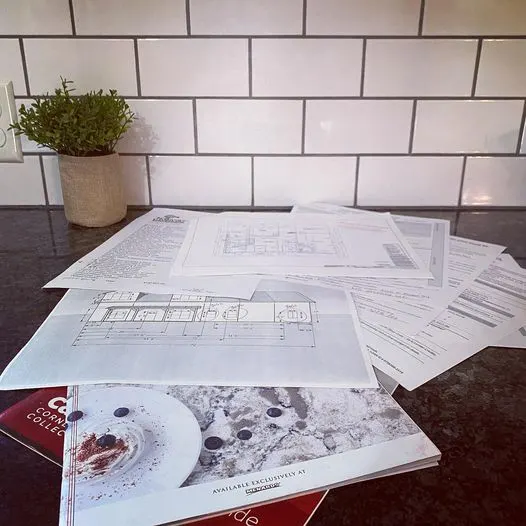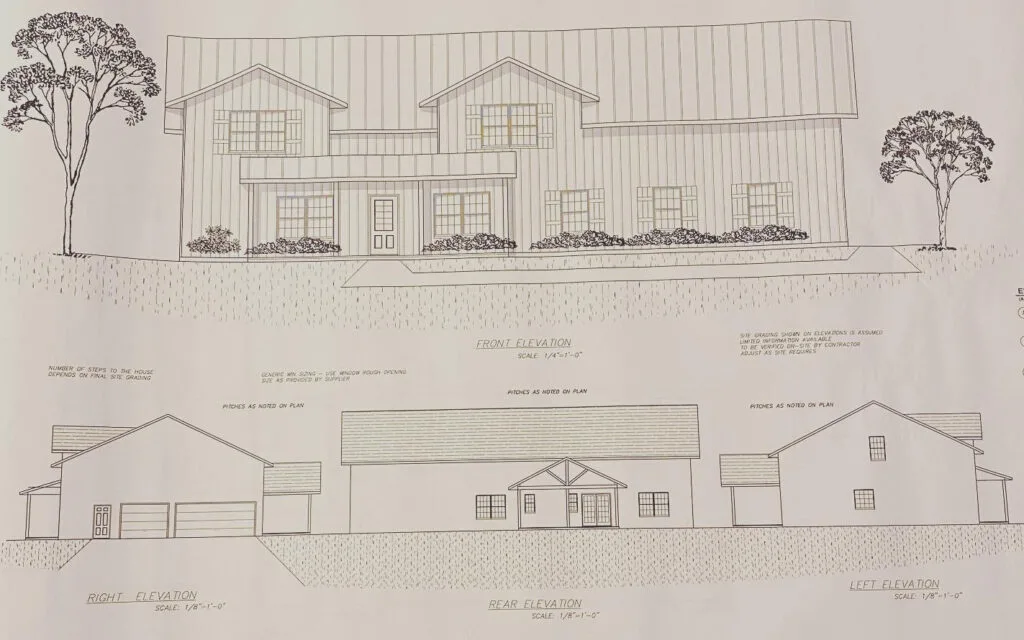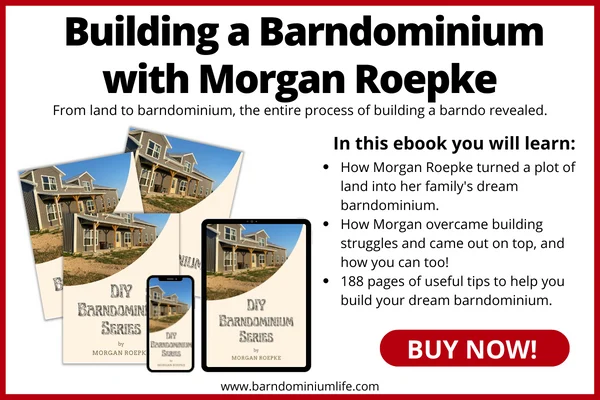How we found the BEST barndominium floor plan for us, redesigned it, worked with an architect, and are on our way towards finishing our dream barndominium!
Check out our other articles in the series:
Part 2: Benefits of a Barndominium
Find more info and pics from our journey on instagram @morgan.homebuild

The first day that my husband Randie and I decided to continue pursuing a house build was the very first day in my entire life that I thought objectively about the different ways that a house is laid out. As much as people talk about paint colors, floor coverings, and cabinets, I had just never thought about what I would choose to have in a floor plan because all of the homes I lived in were already built! I remember thinking, “Oh, I am sure there are a ton of simple plans online. We will find one no problem.” I had so much learning to do. After months of browsing online and in magazines, we were shocked that the ideas in our head weren’t quite represented anywhere that we could find, and so we had to pause and rewire our thinking.
Page Contents
Floor Plan: The ONE
At the beginning of our home search, we were determined to find or create a barndominium floor plan to match our dreams of building a barndominium. To us, this meant a simple, rectangular shape, and one gable-style roof line. But then we also had a long list of things that we wanted like covered porches, large garage space, large pantry, office, etc. The more we began to think about all of the things we wanted and needed in a plan, the more we realized that we needed to get more creative.
The first thing we did was broaden our search. Instead of only looking at barndominium house plans, we started looking at floor plans for traditional homes as well. Even though it seemed like we could rarely agree on which plans we liked and didn’t like, I could tell we were getting closer. Then, one night, as we were searching, we found one plan that we just loved. It met all of the needs we had, and we could see that minor adjustments could allow us to have most, if not all, of the things on our list.
By the way, I highly recommend sitting down and thoroughly listing out all of the things you want and need in a home in a chart. We found that there were certain things on our list that we NEEDED no matter the cost. Those things belong in the need column. Then, there were items that we really wanted, but it would depend on the cost. Those were in the want column. As you get down to splitting hairs in home building, you will use this list so much to make decisions and continually reevaluate what you want and need in a home.
One of the most helpful websites for us, as we were clawing through hundreds of layouts online, was architecturaldesigns.com.
Floor Plan: Redesigning
Now here was our problem: because we started looking at all kinds of floor plans instead of just barndominium plans specifically, the floor plan we fell in love with was a traditional home. It had dormers in a second level and lots of different bump outs in the front. So many corners! It looked nothing like a barndo, and I knew that we could love it even more by sitting down with some graph paper and making the footprint more simple. So that’s exactly what I did. Over and over and over.
And over
And over
And over
Overall, the general layout of the rooms stayed the same, but I was able to adjust room dimensions, start from scratch to create the pantry of my dreams, and just feel totally in control of every little choice along the way. I loved that. There isn’t one room in this home I haven’t considered many times over. This strategy of drawing it out ourselves worked well for us for many reasons, but one of the most important reasons is that we would need it later for drafting official plans. We didn’t know that we would need architectural designs, but when we sat down with our metal company, they encouraged us to work with a drafter to create official drawings (this was also required in our county). Because of all the work we had done, when we sat down with the drafter, we were on the same page and confident in what we wanted in our home. This helped the whole designing process go much smoother.
Floor Plan: Official Drafting

I was able to get quotes from many drafting companies online who usually offered to do basic architectural designs for a barndominium. I call them “drafters” intentionally because usually “architects” are far more expensive. Some counties will require licensed architects to draw your plans, but ours did not, so we decided to look into drafters who were more reasonably priced. Many of the online companies’ packages included help organizing your needs/wants into a floor plan, editing until it is right, and sending finalized plans which includes elevation drawings, floor plans with dimensions, foundation drawings, and possibly electric drawings. Now, this is just a generalization. Each company I talked with offered different packages at different costs, and most were based throughout the country and wanted to meet virtually to conduct meetings. I’m sure if we had decided to use one of these companies, it would have worked out just fine; however, our metal company suggested a local drafter who we could meet with in person, we we decided to move forward with them.
Choosing a local drafter was an amazing choice for us. We were able to lay out all of our work that we had done on our graph paper. We laid out the original floor plan, inspiration pictures, and anything else we had. Most importantly, though, we were able to explain our vision in person and he really took our ideas and brought them to life. Our drafter was able to help us make good money saving decisions and forced us to think about things that we hadn’t pondered yet (like ceiling height, roof pitch, and many other things). Even if you are building with a general contractor, using a drafter or architect could help you decide what YOU want, and help everyone on the team get on the same page.
Floor Plan: Making Changes
Regardless of how much you love your plans after drafting, it is likely that there will be a few things that you not sure about or that you don’t think about changing until after plans are finalized. In fact, we actually decided today (months after finalizing our plans) that we wanted to make a pretty major change in our plans. What do you do then?
First and foremost, the earlier you make the change, the better. Some things can be changed easily after framing, and some things you can’t change once the concrete is poured. Generally, once things are set in stone (pun intended) changes can become expensive and time-consuming. Do your best to analyze every part of your plan before construction starts. If you do change your mind though, which is totally normal, communicate! You may be assuming that an easy change is much harder than it really is.
Start your barndominium floor plan search here!

